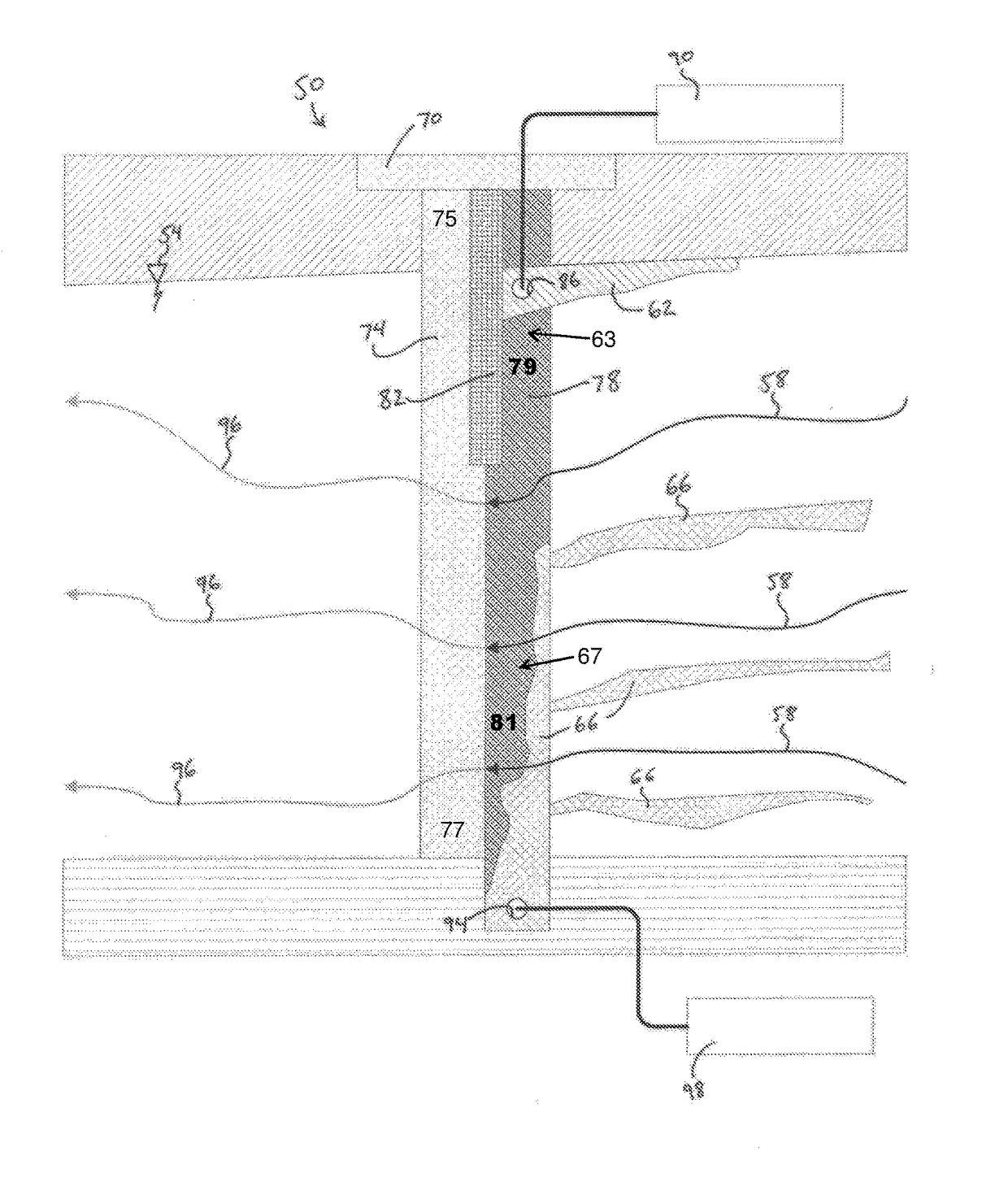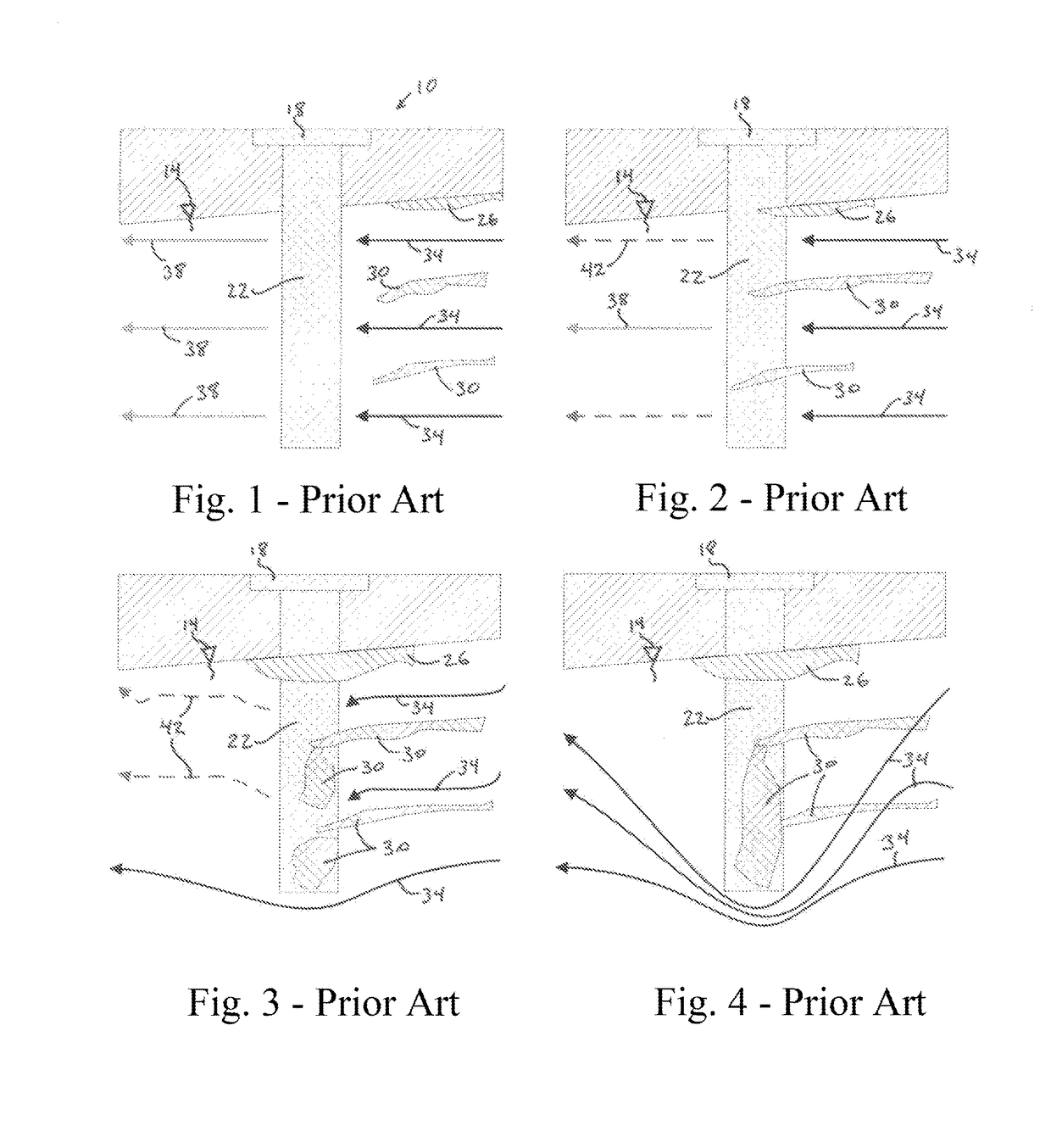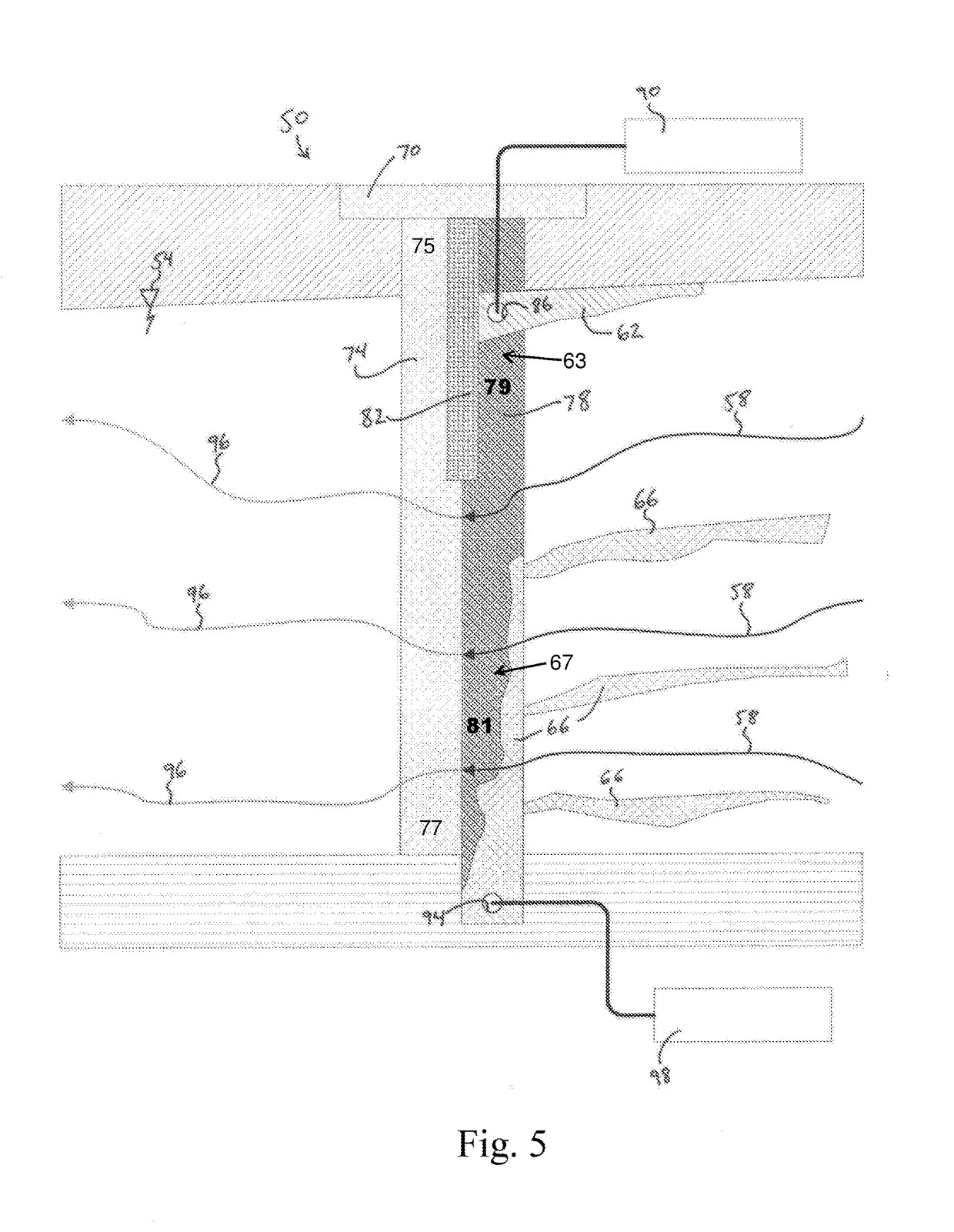Device and method for trapping non-aqueous-phase liquids prior to a permeable reactive barrier for the treatment of contaminated groundwater
a non-aqueous phase liquid and reactive barrier technology, which is applied in water/sewage treatment by oxidation, separation processes, and treatment involving filtration, etc., can solve the problems of obstructing the passage of water, and affecting the flow rate of water
- Summary
- Abstract
- Description
- Claims
- Application Information
AI Technical Summary
Benefits of technology
Problems solved by technology
Method used
Image
Examples
Embodiment Construction
[0030]The present invention relates to the inventors' observation that NAPL can prematurely consume the treatment capacity of a PRB, physically foul it, and or block the flow of water through it. Also NAPL, impinging on a PRB, can pass directly through it, only partially treated thereby defeating its intended purpose. If the PRB is blocked partially or completely, groundwater will be diverted around the PRB either partially or completely. A blockage could also cause failure of the PRB by focusing groundwater flow through a section of the PRB causing premature depletion of the treatment chemical. NAPL could also migrate through a water-permeable PRB defeating the treatment component and allowing a source of groundwater contamination to migrate down-gradient (that is, downstream) from the PRB.
[0031]FIG. 5 shows a groundwater treatment system 50 situated adjacent a water table 54 and in a flow of contaminated ground water 58 that includes LNAPLs 62 and DNAPLs 66. The groundwater treatm...
PUM
| Property | Measurement | Unit |
|---|---|---|
| grain size | aaaaa | aaaaa |
| impermeable | aaaaa | aaaaa |
| permeability | aaaaa | aaaaa |
Abstract
Description
Claims
Application Information
 Login to View More
Login to View More - R&D
- Intellectual Property
- Life Sciences
- Materials
- Tech Scout
- Unparalleled Data Quality
- Higher Quality Content
- 60% Fewer Hallucinations
Browse by: Latest US Patents, China's latest patents, Technical Efficacy Thesaurus, Application Domain, Technology Topic, Popular Technical Reports.
© 2025 PatSnap. All rights reserved.Legal|Privacy policy|Modern Slavery Act Transparency Statement|Sitemap|About US| Contact US: help@patsnap.com



